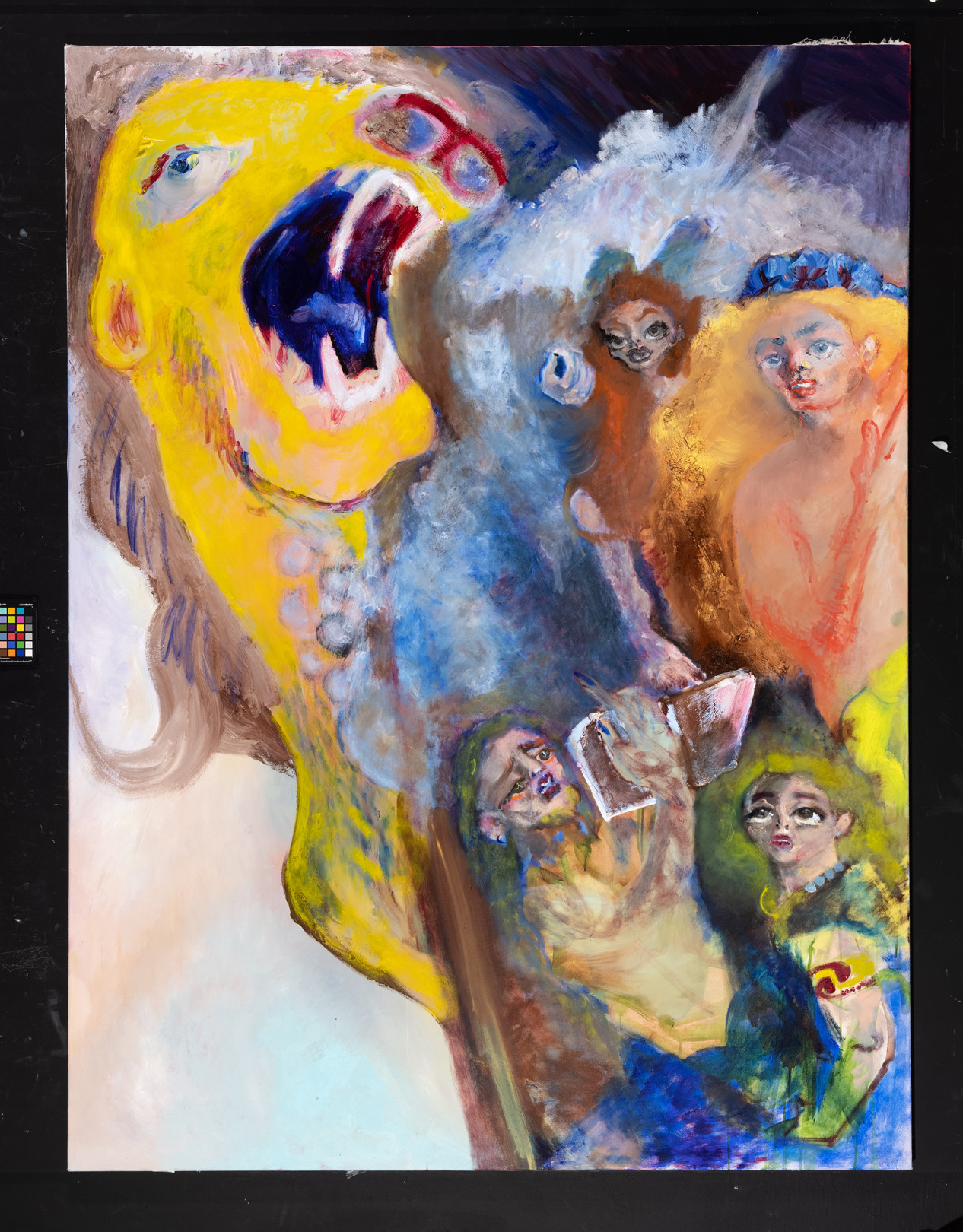Eliza Kotelnikova↓
Gallery
Studies
| 2018–2022 | Painting 4, AVU (Marek Meduna, Petr Dub) |
| 2016–2018 | Painting 4, AVU (Martin Mainer) |
About the work
Will as a Core and a Figural Painting
Figure in painting is often meant as a revelation of the human body, interpreted via color combinations. My work outlines a way of going beyond this idea. To me, figures become spectators. They are the figures I shape with my mind and body. It is them for who I develop a new concept of color.
If we look at the concept of figural painting that I developed during my studies, it is largely a reflection of Friedrich Nietzsche’s writings. I also work with the concept of will. I view will as the core of everything living and the basis of understanding each other. By will I mean the commonplace wanting, but also the position from which the living person remembers. My theory goes beyond time and space; beyond all causes and consequences. I do not deal with the relative commencement of the will, but with the entire present circumstance, the innate nature of the will.
Just take Adam as an example to facilitate understanding this concept: Adam can be an objective or subjective will. In addition, like any will, he tends to “presuppose oneself and beyond.”
If Adam is the objective will, then he has an object (another objective will), which is the only object: only one and only directed towards it. If Adam is the subjective will, then he has no object, he does not even see the wills separately; but he has the subject – and the subject is formed by the tendency to “presuppose oneself and beyond” from another will. If Adam is the objective will, he knows that his tendency to “presuppose himself and beyond” will end at the moment of merging with the object – Eve – and that this means arriving at a new stage of development and entering a new dimension (for him and his object). When he, on his journey, encounters another objective will that is not an object – not Eve – his tendency to “presuppose oneself and beyond” does not materialize.
If he meets the subjective will – Lucia – then Lucia acts as a counter-will to him. Adam knows he is coming across someone who does not have an object, and he knows that the counter-will is focused on his tendency to “presuppose oneself and beyond.” At this point, Adam’s tendency is partly persistent and partly realized: Adam is developing the concept of “I cannot.” It goes like this: he comes across someone who he thinks “is not like me and is not me,” and imagines that this counter-will has his object. He derives his self from the counter-will, the self, which itself can do nothing (which is the negation of the object of the will).
If Adam is the subjective will (like Lucie), he does not see the cores–the wills, and his tendency to “presuppose oneself and beyond” has no end. At the moment of merging with the subject (with the tendency to “presuppose oneself and beyond” from another will), Adam’s tendency does not end: it partly persists and partly realizes. To him, the subject simultaneously acts as a counter-will. He derives the concept of “I can” from the subject. That is, “I myself can” – his self can do anything. Subsequently, Adam focuses on another, new subject.
In the dimension of life from which I speak, two kinds of will interact, as has just been described above. The tendency to “presuppose oneself and beyond” is the basis for the concept of the body. At the moment of non-realizing this tendency, there originates a line, while in the moment of its realization, the line originates again. If will meets the counter-will, with which this tendency has been realized from earlier encounters, there originates color and the concept of time.
Although my conception may seem too difficult, broad, or even incompatible with practice, it is a prism for looking at artistic achievements that reveals the realistic elements of any work of art.

